Mintel, which has the broadest definition, pegs the market at a whopping $10.5bn in 2013, predicted to rise 48% to $15.6bn in 2016 - but includes anything with a gluten-free label (including products that might be naturally-gluten-free).
Packaged Facts, meanwhile, reckons the size of the prize is somewhat smaller ($4.2bn in 2012), although it also forecasts similar double-digit growth rates.
Euromonitor, finally, estimates that the category was worth a much more modest $486.5m in 2013, comprising $281.5m from bakery; $45.6m from pasta; and $159.4m from ready meals; but also projects explosive growth of 38.5% from 2013-18.
Unlike the other two market researchers, it limits its definition to products that have been specifically formulated to replace wheat flour such as bread and cookies, and doesn’t include products that are are naturally gluten-free or have undergone minor formulation changes such as Chex cereals or Rice Krispies.
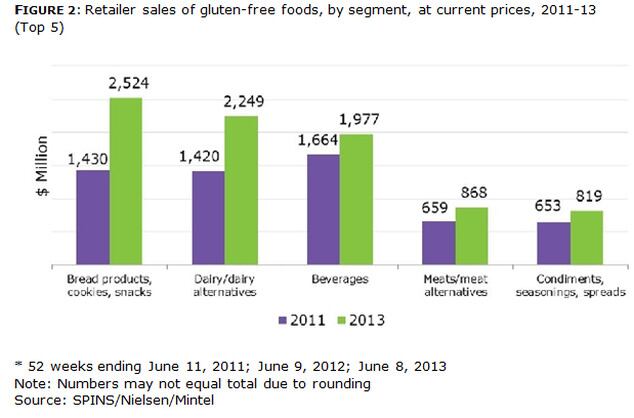
Paleo, Wheat Belly, Grain Brain…
The one thing they all agree on, however, is that the market is growing, fast, and growth is not being driven by celiacs (who account for less than 1% of the population - and less than that if we’re talking diagnosed celiacs) or people with non-celiac gluten sensitivity (estimated to affect up to 6%, although there is no validated diagnostic test or biomarker for it).
The growth is instead being driven by a far broader demographic of consumers trying to reduce or avoid gluten or wheat for health, weight management or other reasons, fueled by the conviction - bolstered by books such as Grain Brain and Wheat Belly - that we haven’t adapted/evolved to process gluten, and would be better off avoiding it.
Indeed, 28% of Americans claimed to be cutting back on breads or baked goods because of wheat, and 23% claiming to be avoiding breads or baked goods owing to gluten, according to a 2013 Packaged Facts survey of 2,000 Americans (click here).
In a recent survey of more than 500 Registered Dietitians conducted by Today’s Dietitian and Pollock Communications, respondents also predicted that anti-wheat sentiments would continue to gain momentum in 2014, with more consumers dabbling with the paleo diet (which seeks to mimic the diet of pre-agricultural hunter-gatherers), gluten-free diets, and the wheat belly diet (click here).
Books like Wheat Belly and Grain Brain are having a big impact in social media
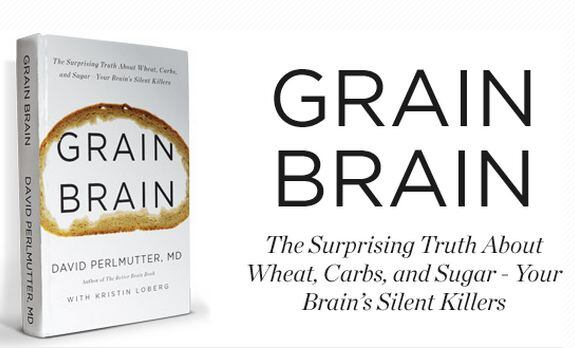
Similarly, while many scientists immediately challenged Dr Perlmutter's analysis in Grain Brain (which alerts readers to the "devastating truth about the effects of wheat, sugar, and carbs on the brain"), the perception that wheat in particular is responsible for all manner of health problems is gaining traction among certain consumer groups, Euromonitor International senior research analyst Virginia Lee told FoodNavigator-USA.
“I think the gluten-free movement in the US has taken off in part because there has not been another blockbuster diet to replace Atkins. I think there is still this suspicion of carbs. It’s also similar to the paleo diet.
“Books like Wheat Belly are also having a big impact in social media; even if people haven’t read the actual books themselves, they are aware of them and there is this feeling that it might be a good thing to cut down on wheat, even if you don’t eliminate it completely.”
Packaged Facts: The conviction that gluten-free products are generally healthier is the top motivation for purchase
Indeed, the “conviction that gluten-free products are generally healthier is the top motivation for purchase” according to Packaged Facts, which says that 35% of consumers that buy gluten-free products say they do so because they are "generally healthier", 27% "to manage my weight", 21% because they are "generally low-carb" and 15% because a member of the household has a gluten or wheat intolerance.
Just 7% of consumers surveyed buy gluten-free products because a household member has celiac disease.
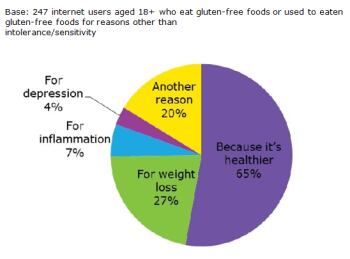
The fact that many manufacturers in this space are increasingly appealing to consumers who see gluten-free as just part of a broader set of claims associated with ‘natural’ or healthier foods is increasingly evident from the positioning - and repositioning - of many brands in the marketplace, says Lee.
“I think manufacturers are thinking there is an opportunity to tap into several markets. Soy-free, dairy-free, gluten-free, as well as natural, or non-GMO, or organic. It’s not just about being gluten-free. It’s like KIND bars, they are all-natural, non-GMO, and also gluten-free.”
Gluten-free seen as one of broader set of claims associated with ‘natural’ or healthier foods
In some respects, this should not come as a surprise, given that many gluten-free products are also sold in the natural food channel, or natural foods sections of mainstream retailers, which consumers often associate with healthier products, she says.
“In Whole Foods Market stores, for example, the gluten-free products are all over the store as they have so many. In more traditional grocery stores with a smaller range, it still makes more sense to block out the gluten-free section.”
Her colleague, research analyst Matt Hudak, adds: “If you can tweak your formulation to go gluten-free, I think many manufacturers think it’s worth it so they can add gluten-free to their other claims.”
As foodservice expert Technomic noted last year, “Once promoted as a menu alternative to the small segment of the population that suffers from celiac disease, gluten-free items are now positioned as simply better-for-you choices that are generally perceived by consumers to be lighter fare.”
Euromonitor: There are opportunities in dollar stores and c-stores
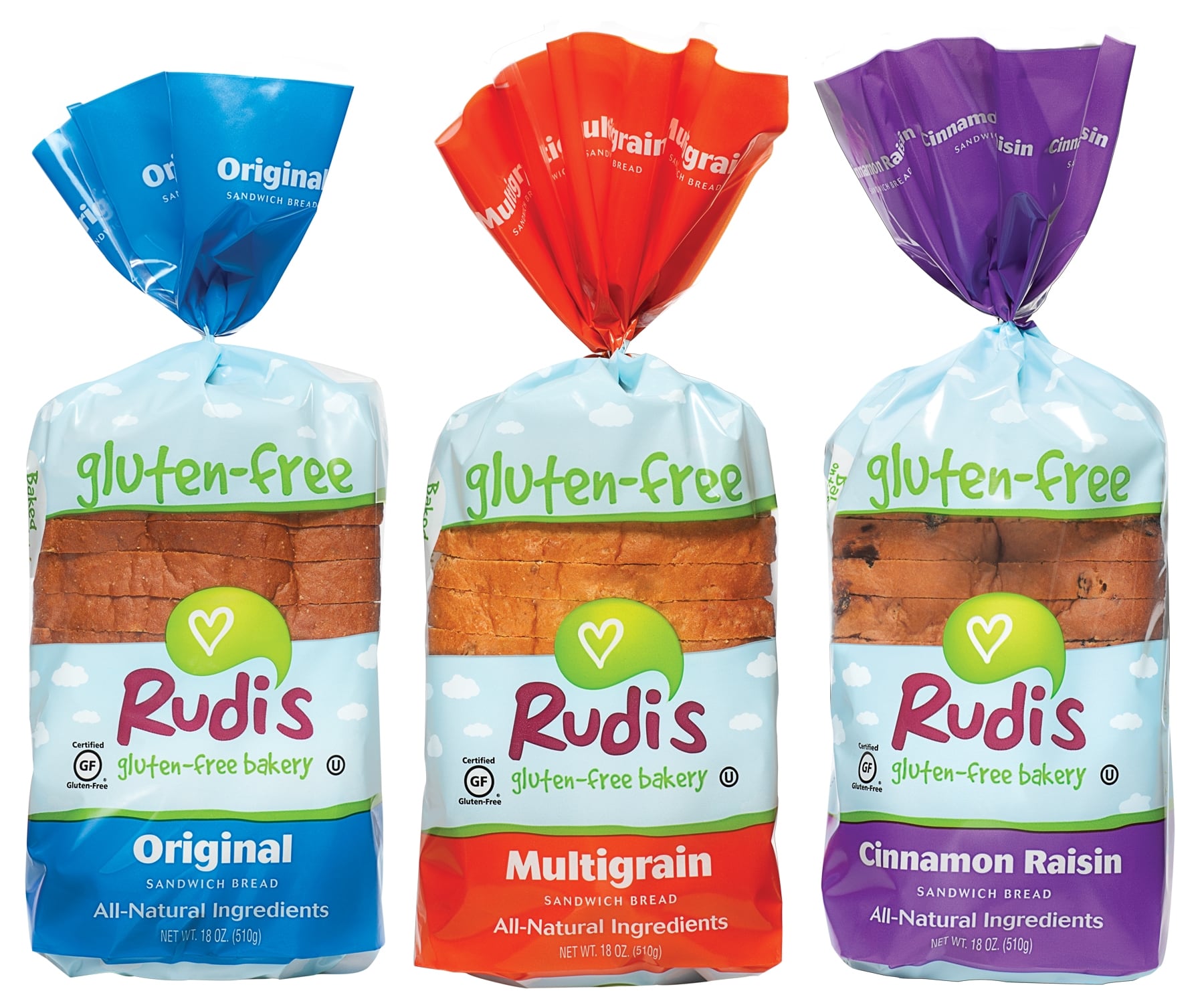
So where is the market going next? Are drugstores (which are steadily increasing their food footprint), club stores and foodservice the next big opportunities for gluten-free?
Yes, says Hudak “But there are also untapped opportunities in dollar stores and c-stores. Snacks and snack cakes are big in these channels.”
As for foodservice, if one of the big fast-food chains comes up with a gluten-free burger bun that tastes half-decent - and works out a way to handle the cross contamination challenges in a way that satisfies people that have to avoid gluten - as well as those that choose to - others will follow, he predicts.
As for food retail, the range of options has proliferated in recent years, says Lee, but there are still gaps to fill, especially in frozen, she says. “You are starting to see more products beyond Amy’s - for example EVOL’s gluten-free burritos and quesadillas, but there’s still room for a lot more.”
That said, mainstream retailers have really woken up to the gluten-free opportunity in the past two years, according to Boulder Brands (Udis, Glutino) CEO Steve Hughes, who predicts that 5-10% of every category that’s wheat-based will “go away or will become gluten free”.
Meanwhile, more customers are now creating dedicated gluten-free sections in frozen, bakery and grocery aisles as buyers recognize that “consumers don’t want to go on a treasure hunt” to find what they are looking for, he notes.
Mintel: Consumption also tends to skew toward those aged under 35
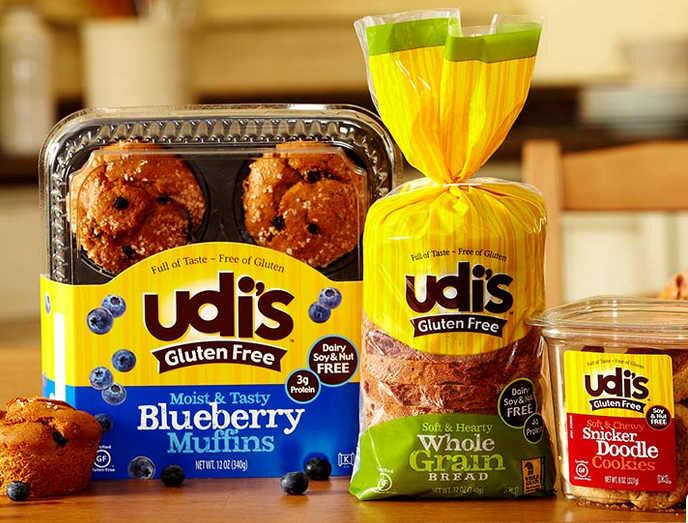
Retailers are also alerting customers to gluten-free products via new merchandizing systems enabling them to highlight products containing pre-selected attributes via customized shelf tags and other tools, says Mintel food analyst Amanda Topper.
“Retailers are also developing more handouts and other tools to help consumers navigate the store to find what they are looking for.”
And with 24% of Americans saying that they, or someone in their household, currently eat gluten-free versions of foods that typically contain gluten, according to Mintel’s June 2013 survey of 2,000 Americans, retailers are beginning to see this as more than a niche opportunity, she said.
“Consumption also tends to skew toward women and those aged under 35, as these consumers are usually more interested in health trends and trying new diets.
“Our survey also showed that three quarters of consumers who do not have celiac disease or sensitivity to gluten eat these foods because they believe they are healthier, despite the lack of any scientific research confirming the validity of this theory.”
Click here to read another trend watcher's rather different take on the market.
Don't miss The FoodNavigator-USA Forum: Gluten-free in Perspective
11.30am EST, April 30, 2014.
Find out more about gluten-free market trends and growth opportunities; the science behind celiac disease, gluten intolerance and wheat allergy; the technical challenges of formulating great-tasting gluten-free products; and the latest consumer research.
This LIVE online panel debate moderated by FoodNavigator-USDA editor Elaine Watson brings together world-renowned celiac disease researcher Dr Alessio Fasano; TJ Mcintyre from leading gluten-free manufacturer Boulder Brands (Udis, Glutino);DrDavid Sheluga, director of commercial insights at food and ingredients giant ConAgra Foods; and Tom Vierhile, innovation insights director at Datamonitor.
